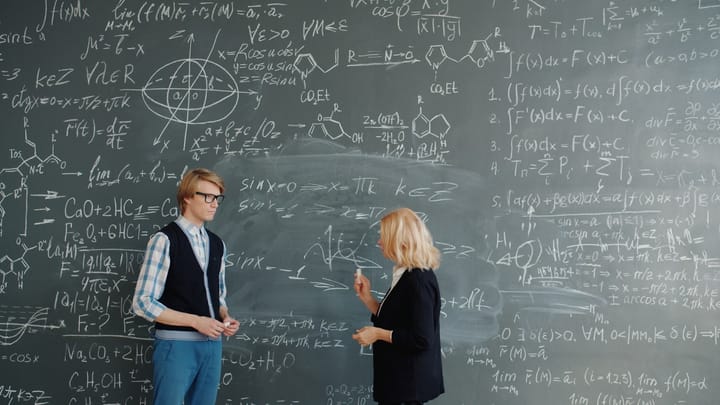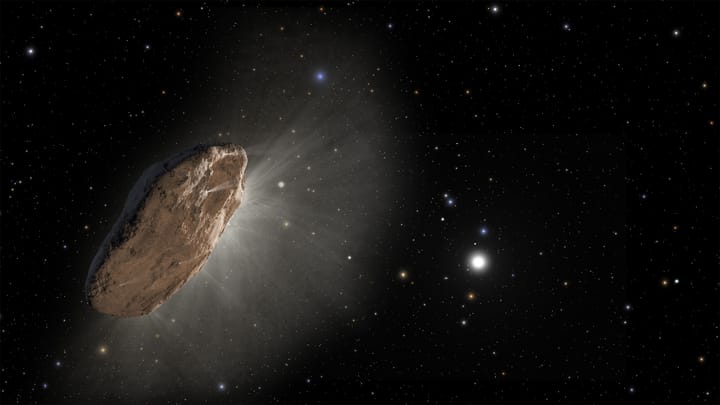Měření: Od prstu k digitální revoluci – pohled do historie a principů
Da origens primitivas à revolução digital, esta palestra explora a história e os princípios da medição. Números transformam observações em dados cruciais para ciência, tecnologia e progresso humano.

This fascinating lecture from the Royal Institution, recorded in 1981 by Reginald Victor Jones, delves into the world of measurement. It's not just about using a ruler or scales; it's about the fundamental process of transforming our observations of nature into numbers, which enable mathematical analysis, communication, and ultimately technological progress. From the first primitive methods to sophisticated modern techniques, the lecture reveals the history, principles, and significance of measurement for human civilization.
Key Insights
- Measurement as Transformation: Measurement is defined as the transformation of observations of the natural world into numbers.
- The Significance of Numbers: Numbers are crucial for logical thinking, reproducibility of results, and precise manufacturing of technologies.
- The Concept of Zero: The introduction of the concept of zero as a placeholder was a fundamental invention enabling efficient multiplication and division.
- The Binary System: The binary system, utilizing only two values (0 and 1), is the foundation of modern computers.
- The Need for Standardization: Accurate measurement requires agreed-upon standards and reproducible units.
- Measurement in History: The Magna Carta contained clauses on standardized measures for wine, beer, cloth, and weights, emphasizing the growing importance of measurement.
From Finger to Ruler: The Origins of Measurement
Jones begins by seeking an answer to a simple question: What exactly is measurement? He shows that transforming our observations of nature into numbers is the first step toward understanding and manipulating it. Numbers enable mathematical analysis and the sharing of information between scientists and engineers. Without them, it would not be possible to reproduce experiments, build precise technologies, or achieve scientific progress.
The lecture also touches upon the difficulties in defining the word "number" itself. It is an intuitive concept that is difficult to express in words. Jones illustrates the basic idea of numbers and sequences using a simple example with a bag of objects (two, then three), thereby emphasizing the need for notation beyond simple counting.
The Revolution of the Concept of Zero and the Binary System
An important moment is the discussion about the development of various measurement systems. Jones points out the limitations of older systems, such as Roman numerals, which had problems representing larger numbers due to the absence of the zero concept. The introduction of the concept of zero as a placeholder in a number was a fundamental invention that enabled efficient multiplication and division. The origin of this idea is associated with India, from where it was adopted by the Arabs and subsequently by Europe.
Another fascinating point is the presentation of the binary system. Jones demonstrates its operation using five volunteers who represent 0 or 1 with their hands. This system, which utilizes only two values, is the foundation of modern computers and the digital revolution.
Standardization: Key to Accurate Measurement
Jones emphasizes the need for standardization for accurate measurement. We need agreed-upon standards and reproducible units to compare results and ensure reliability. The history of this process is illustrated by a reference to the Magna Carta (1215), which contained clauses on standardized measures for various products, such as wine, beer, cloth, and weights.
From the Globe to the Metric System and Apollo-Soyuz
The lecture also touches upon the development of specific measurement systems. Jones mentions attempts to measure the Earth's circumference in France after the French Revolution, which led to the creation of the metric system based on a fraction of the Earth's circumference (although the initial measurements were inaccurate). The success of this system lay in its use of powers of ten (centimeters, millimeters, kilometers), which facilitates calculations.
An interesting example of international cooperation and measurement precision is the successful docking of the American and Soviet spacecraft Apollo-Soyuz in 1975, which demonstrates the power of precise measurement using a common standard – the meter.
Measurement in Industry and Science: From Specialization to the Wheatstone Bridge
Jones also addresses the rise of specialized factories manufacturing components, which enabled mass production and a modern industrial society. However, he also shows the potential negative impacts of this specialization on workers.
The lecture moves on to explain techniques for detecting small changes using comparative measurement (for example, weighing ether vapor). Then he introduces the Wheatstone bridge, a device used to detect minute changes in electrical resistance, which is crucial in electronics. An interesting anecdote is Charles Wheatstone's nervousness and his escape from the lecture, which led to an impromptu explanation by Michael Faraday about "Ray's vibrations." These ideas inspired James Clerk Maxwell to formulate the theory of electromagnetism, which predicted the existence of further electromagnetic waves and eventually led to the discovery of radio waves by Heinrich Hertz.
Summary and Reflections
Reginald Victor Jones's lecture is a fascinating dive into the history and principles of measurement. It shows how this process evolved from primitive methods to sophisticated techniques used in today's science and industry. It emphasizes the importance of standardization, precision, and the continuous search for new ways of measuring the world around us.
References
- Royal Institution Christmas Lectures: https://www.rigb.org/christmas-lectures
- The Royal Institution: https://www.rigb.org/
Približne 176 gCO₂ bolo uvoľnených do atmosféry a na chladenie sa spotrebovalo 0.88 l vody za účelom vygenerovania tohoto článku.





Komentáre ()